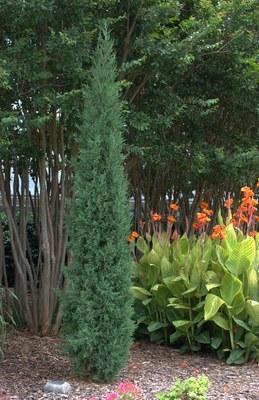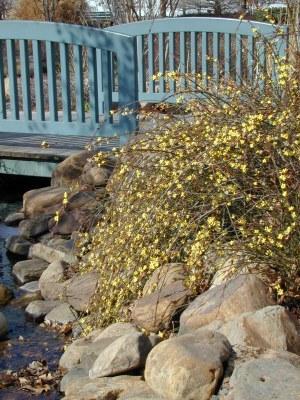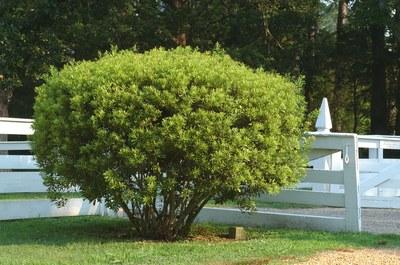By Deloris Castor – Garfield County Master Gardener
Proper pruning enhances the beauty of almost any landscape tree and shrub and is an essential maintenance practice in home landscaping. On the other hand, improper pruning can destroy the natural beauty of a tree or shrub and reduce its landscape potential by weakening and thus exposing plants to various maladies.
Pruning, like any other skill, requires knowledge and practice to achieve success; remember that pruning is the removal of certain plants parts that are no longer effective or of use to the plant. It is done to redirect additional energy for the development of the flowers, fruits, foliage, and limbs that remain. Pruning essentially involves removing plant parts to improve the health, landscape effect, or value of the plant. It is simply a matter of common sense. Pruning is not difficult if you take the time to learn why, when, and how to prune.
The necessity for pruning can be reduced or eliminated by selecting the proper plant for the location. Plants that might grow too large for the site will require pruning to keep them in bounds, making the plants unsightly and possibly weak with age. Unless pruning is done to form a hedge, espalier, or topiary, it should not be utilized to destroy or alter the natural plant shape.
Pruning may be necessary to maintain a vigorous tree or shrub. Specifically, pruning is practiced to TRAIN THE PLANT, MAINTAIN PLANT HEALTH, AND IMPROVE THE QUALITY OF FLOWERS, FRUIT, FOLIAGE, AND STEMS: Pruning can minimize the hazard of limbs interfering with power lines or growing over structures. It can also remove weak crotches before limbs break in strong winds or ice storms and can open blocked sightlines caused by overhanging limbs at driveways or street corners, thus preventing injury or property damage.

Removal of the current year’s faded flowers and fruit clusters will promote flower buds for the following season. Proper pruning can restore a youthful, natural growth habit in certain overgrown shrubs. Regular pruning can prevent a plant from overgrowing its space in the landscape and eliminates the need for drastic cutting (butchery) in the future.
There are several tools the homeowner will need for proper pruning. They are lopping shears, hand pruner, folding saw for tight places, bow saw for limbs, and leather gloves. If a power saw is needed, hire a professional arborist who is insured against personal injury and property damage. One should not climb trees with pruning tools unless experienced or when a proper safety harness is used. When climbing a ladder to reach limbs, have someone hold the ladder or tie it in place before beginning to work
Store equipment in a dry room; keep it sharp and in good operating condition. When pruning diseased plants, disinfect all shears and saw blades after each cut to prevent spreading the disease to healthy plants. Dip the tools in rubbing alcohol or a solution of one part bleach to nine parts water. A good example of this is pruning fire blight from pears, pyracantha or crabapples. At the end of the day, oil the pruning equipment well to avoid rust. Clean and oil tools regularly, including wiping an oily cloth on blades and other metal surfaces. Keep cutting edges sharp, several passes with a good oilstone will usually suffice. Paint, varnish or otherwise preserve wooden handles. Use tools properly. Don’t twist or strain pruners or loppers. Keep the branch to be cut as deeply in the jaws and near the pivot as possible. Don’t cut wires with pruning tools.

Research has indicated that wound dressing or tree paint is not essential as previously thought. Dressings may harbor disease organisms rather than exclude them. It has also been determined that wound dressing slows the wound callusing process, rather than speeding it up. A good, clean, unpainted pruning cut will normally callus faster than a painted one. Based on tree health alone, pruning cuts should not be painted.
Pruning can be done at any time of the year; however, recommended times vary with different plants. Contrary to popular belief, pruning at the wrong time of the year does not kill plants, but continual improper pruning results in damaged or weakened plants. Do not prune at the convenience of the pruner, but rather when it results in the least damage to the plant. There is little chance of damaging the plant if this rule is followed. In general, the best time to prune most plants is during late winter or early spring before growth begins, but here are exceptions to this rule. The least desirable time is immediately after new growth develops in the spring. A great amount of carbohydrates stored in roots and stems is used in developing new growth. This “food” should be replaced by new foliage before it is removed; if not, a considerable setback in plant growth may occur. This is a common problem encountered in pruning. It is also advisable to limit the amount of pruning done in late summer as new growth may be encouraged on some plants. This “soft” growth may not have sufficient time to harden off before cold weather arrives resulting in cold damage or winterkill. Prune plants damaged by storms or vandalism and those with dead limbs as soon as possible to avoid additional insect and disease problems that may develop.
Keeping your trees, shrubs, and plants properly pruned helps promote a healthy plant, a healthy and safe environment, and an aesthetically pleasing garden and yard.






